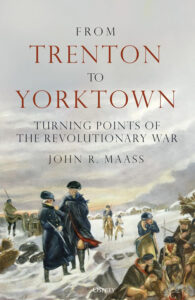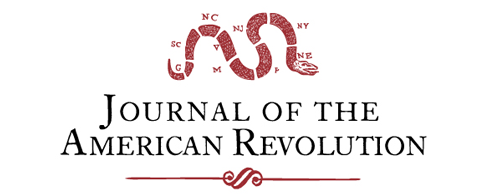BOOK REVIEW: From Trenton to Yorktown: Turning Points of the American Revolution by John R. Maass (Oxford, UK: Osprey Publishing, 2025) $30.00 hardcover.
John R. Maass produced a very readable and enjoyable narrative with the publication of his recent text. In his introduction the author points out that warfare remains an important component of human behavior even though some contemporary historians have turned away from the study of military history. He explains that many writers chose different events in the history of warfare to highlight their perspective on what is important. A bit tongue-in-cheek, he infers that authors tend to describe actions as “decisive battles” because of their size or immediate tactical importance. He implies that this approach fails to place events in broader context. He instead uses the term “turning points” that captures the strategic and operational-level importance without over-dramatizing these events or their outcomes. Maass chose to identify five events for development as turning points of the American Revolution.
 The five turning points he addresses are the Battles and Campaigns of Trenton and Princeton, Saratoga, Guilford Courthouse and Yorktown, and the winter cantonment at Valley Forge. He devotes one chapter to each of these turning points and most importantly addresses each in the broader context of events. In other words, he addresses each of these as campaigns that influence the dynamic path and outcomes of the revolution. In this way he provides the reader with sufficient context beyond the immediate event or battle to fully appreciate why he selected it and labeled it a turning point.
The five turning points he addresses are the Battles and Campaigns of Trenton and Princeton, Saratoga, Guilford Courthouse and Yorktown, and the winter cantonment at Valley Forge. He devotes one chapter to each of these turning points and most importantly addresses each in the broader context of events. In other words, he addresses each of these as campaigns that influence the dynamic path and outcomes of the revolution. In this way he provides the reader with sufficient context beyond the immediate event or battle to fully appreciate why he selected it and labeled it a turning point.
He addresses these events in chronological order. On the Trenton Princeton campaign the author concludes that Washington “staved off the collapse of the army.” On Saratoga he assesses that the victory had numerous positive outcomes including the French alliance. Maass calls the winter at Valley Forge a reformation of the army and describes one of the key outcomes the Guilford Courthouse campaign as a maturation of General Greene’s decision making, allowing his army to remain in the field. On Yorktown he quotes President Ronald Reagan: “The promise made on July 4th was kept on October 19th.” The Yorktown Campaign serves as one of the defining examples of joint and multinational military operations and is clearly a turning point for many reasons too numerous to mention in a survey of the campaign.
In his conclusion he points out that some authors have actually changed their thoughts on the most important or significant events of the revolution. He clearly identifies that the evolution of the thoughts of respected revolutionary writers helped explain his selection of “turning point” instead of using the term decisive or critical event.
Maass uses a variety of primary and credible secondary sources in addressing each of these five events, reflecting solid research and analysis. His thoughtful narrative holds the reader’s attention, resulting in a pleasant experience for the reader. The level of detail is appropriate for entry level readers of revolutionary history while his analysis will appeal to more seasoned students of the revolution.





Recent Articles
This Week on Dispatches: Stuart Lillie on Henry Knox’s Artillery Train
Vanishing Ranks: Rawlings’ Rifle Regiment and the Struggle to Recruit for the Frontier
American Spies and Sympathizers at Fort Detroit
Recent Comments
"Vanishing Ranks: Rawlings’ Rifle..."
Good work here. This being one of the harder units to research,...
"The Declaration of Independence:..."
I don't know whether or not it's true that John Hancock said,...
"“Earned By Veteran Intrepidity”:..."
Hello John, Perhaps it was so-called because Simcoe and Ewald got themselves...